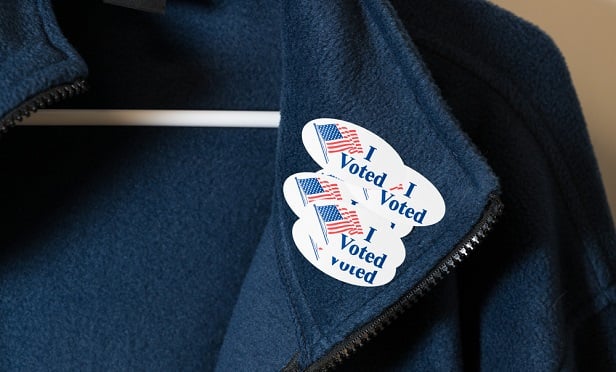 About 60 percent of eligiblevoters cast ballots in the 2016 presidential election, according todata from the United States Elections Project. (Photo:Shutterstock)
About 60 percent of eligiblevoters cast ballots in the 2016 presidential election, according todata from the United States Elections Project. (Photo:Shutterstock)
A record 44 percent of U.S. firms will give workers paid time off to vote Nov. 6, up from 37percent in 2016, according to reports from the Society for HumanResources Management.
|Millions of workers could be covered by such policies, and ifthey facilitate voting among people who otherwise wouldn't, itcould affect the outcome of contested races for the House and Senate —potentially even determine which party controls both chambers — aswell as governor's races in numerous states.
|Related: Health care, the midterm elections andbeyond
|More than 400 companies have also signed on to efforts withElectionDay.org and Time to Vote to boost voter turnout in avariety of ways. That doesn't necessarily mean shutting down orofficially giving workers time off. Some firms, like Lyft Inc.,have instituted “no meetings” policies or provided on-site voterregistration.
|Among them is restaurant chain CAVA, which has 1,800 employeesspread across 68 locations in 10 states. For the first time, thecompany's workers will get two hours of paid leave at the beginningor end of their shifts to vote.
|“When I was a waiter for 10 to 12 years, I never had time to getout there and vote,” CAVA co-founder Ted Xenohristos said. “We tookthis step so they could be more active members in our community. Wejust want to give them the opportunity to vote.”
|Low turnout
The U.S. lags well behind most other industrialized nations inelection turnout. About 60 percent of eligible voters cast ballotsin the 2016 presidential election, according to data from theUnited States Elections Project. In midterm elections, like thisyear, turnout rates are historically even lower. In 2014, about 36percent of eligible voters participated, according theorganization's figures.
|Business leaders say they can help, and hundreds have cometogether this election cycle to do so, often as part of broadercorporate social responsibility strategies. “This is a more neutralway for them to engage, in that this is non-partisan,” said MarickMasters, Wayne State University professor of business whoresearches business and labor political action.
|This year, however, even the very act of voting has taken on apolitical valence. As a general rule, the larger and more diversethe electorate, the better Democrats tend to do, one reason voterturnout has become such a central part of hotly contested races inGeorgia, North Dakota and elsewhere.
|Unions' role
Unions have also played a role in registering voters and makingsure they have time to vote. Workers at Ford, General Motors andChrysler, which are members of the United Auto Workers, have hadthis provision in their contracts since the 1990s.
|Schools close down in Michigan on that day, so teachers canvote, even though Michigan is a state that doesn't requireemployers to give their workers any time off.
|“This is essentially saying look we want to make this as easy aspossible,” Harley Shaiken, a labor historian at the University ofCalifornia at Berkeley, said. “The difficulty should be in makingyour decision.”
Complete your profile to continue reading and get FREE access to BenefitsPRO, part of your ALM digital membership.
Your access to unlimited BenefitsPRO content isn’t changing.
Once you are an ALM digital member, you’ll receive:
- Critical BenefitsPRO information including cutting edge post-reform success strategies, access to educational webcasts and videos, resources from industry leaders, and informative Newsletters.
- Exclusive discounts on ALM, BenefitsPRO magazine and BenefitsPRO.com events
- Access to other award-winning ALM websites including ThinkAdvisor.com and Law.com
Already have an account? Sign In
© 2024 ALM Global, LLC, All Rights Reserved. Request academic re-use from www.copyright.com. All other uses, submit a request to [email protected]. For more information visit Asset & Logo Licensing.








